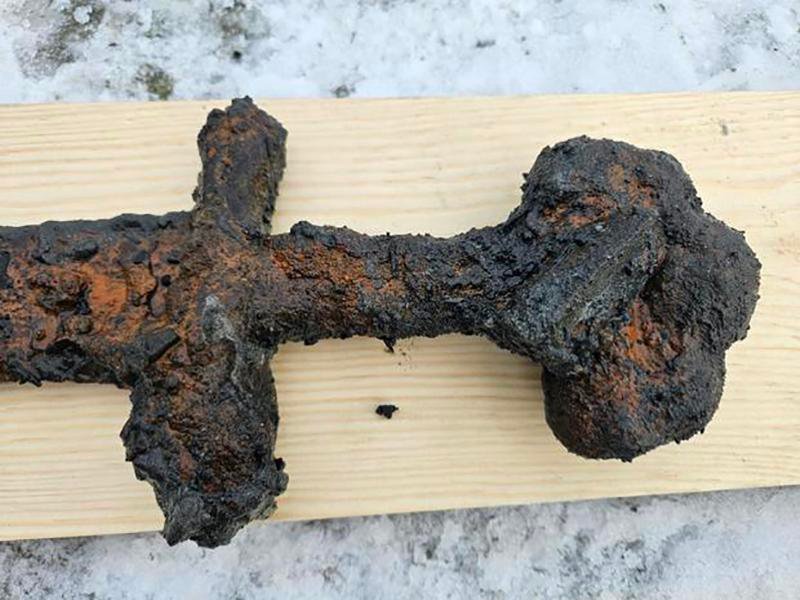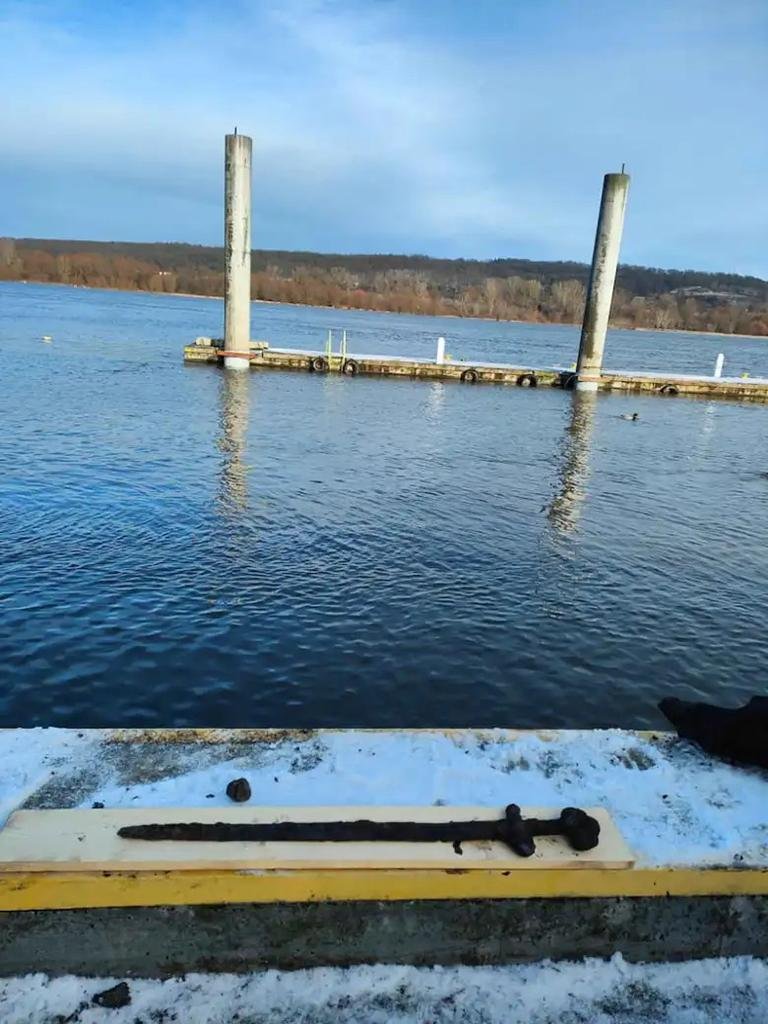A Viking-era sword with an Ulfberht inscription has been unearthed during dredging works in the Vistula River near Włocławek, Poland.

Credit: Center of sport and recreation (Ośrodek Sportu i Rekreacji Włocławek)
Discovered at the bottom of the river, the sword, believed to be over 1,000 years old, has ignited curiosity about its origins, with experts suggesting ties to Viking history. The sword, identified as a Petersen Type S, displays clear characteristics from the 10th century, with an inscription of “+VLFBERHT+” on the blade.
The discovery, announced by the Sports and Recreation Centre in Włocławek, marks a rare find, as only eight similar swords have been found in Poland to date. The weapon was uncovered during dredging works on a marina, prompting immediate notification to the Provincial Office for the Protection of Monuments (WUOZ) in Toruń. The sword was then transported to the Nicolaus Copernicus University in Toruń for further inspection, including X-ray analysis.
Preliminary analyses trace the sword’s origins back more than 1,000 years to the 10th century CE, a period significant for Poland’s history. Some experts speculate that the sword may have witnessed the formation of Polish statehood during the era of the House of Piast, the earliest known dynasty in the region. However, the sword’s mysterious inscription raises questions about its connection to the Viking culture.

Credit: Provincial Office for the Protection of Monuments in Torun
The Ulfberht swords, characterized by a distinct inscription, are believed to be of Frankish origin, likely from the Rhineland region. Approximately 170 Ulfberht swords have been discovered in Europe, mainly around the Baltic Sea and Scandinavia. These swords, serving as a transitional link between Viking and medieval knightly weaponry, boast a high technological level, featuring a precisely defined carbon mixture in their steel for optimal power, flexibility, and durability.
Sambor Gawiński, from the Provincial Conservator of Monuments said: “About 170 Ulfberht swords have been found in Europe so far,” with most located around the Baltic Sea and Scandinavia. The Ulfberht swords, with a wide, flat blade measuring approximately 80 centimeters, have become symbols of high-quality steel and specific origin.
Professor Wojciech Chudziak from the Nicolaus Copernicus University in Toruń suggested the possibility of the sword being a Viking warrior’s weapon. He pointed out the strategic location of Włocławek, where major sea and land routes intersected from Kujawy, Mazovia, and towards Kievan Rus’, supporting the idea that the Vikings might have had a presence in the region.

Credit: Provincial Office for the Protection of Monuments in Torun
However, opinions regarding the Viking connection remain divided. Robert Grochowski, a Polish archaeologist, cautioned against hasty assumptions, emphasizing the need for detailed research. He argued that while these swords are often referred to as “Viking swords,” they were technically created in territories in today’s Germany and traded widely throughout Europe.

Credit: Center of sport and recreation (Ośrodek Sportu i Rekreacji Włocławek)
The sword, now undergoing conservation work at Nicolaus Copernicus University under the supervision of Dr. Ryszard Kaźmierczak, will be preserved for at least two months. Following conservation, the sword will find a permanent home at a facility with suitable conditions for storing such historical artifacts. The decision on its placement has yet to be determined.